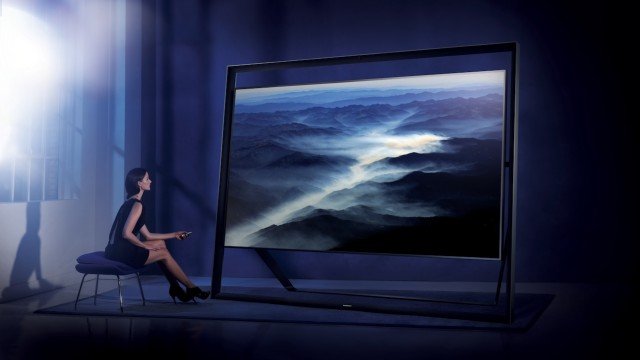In our daily life, if we want to talk about drama, we must think of television. This is also a “treasure†that we passed down from a very young age.
However, with the development of science and technology and the progress of the times, television has become thinner, larger, and more intelligent. And not only has the TV changed, but with the continuous development of projection technology, the non-screen projection technology has gradually developed into our daily life. The non-screen projection TV has also gained a seat in the TV market. Good helper.
However, if it is not for enthusiasts, I believe many people will still choose to watch TV shows and movies. There are screenless projection TVs and smart TVs on the market. How do we choose?
Non-screen projection and smart TV
Speaking of these two, I believe that professionals are still relatively clear, but most people are not familiar with the two, then what is a non-screen projection TV, what is a smart TV?
Non-screen projection TV: The use of projection technology to achieve the picture is put on any white wall and other similar curtain fabric carrier, to get rid of the limitations of traditional LCD TV LCD screen. And technically, the size of the picture can be freely adjusted, and the movement is also very portable. Moreover, only projectors with TV receivers and Android smart solutions can be called smart projection televisions or non-screen projection televisions.
Smart TVs: Add more smart operations than traditional LCD TVs. Its size, brightness, and can be watched around the clock.
Then, what are the advantages and disadvantages of both?
Comparison of the advantages and disadvantages of the two
Comparing the intelligent functions of screenless projection TVs and smart TVs, the difference is not very big. Both can be equipped with powerful processors, memory and display chips to achieve smooth operation of Android smart operating systems and 3D hardware decoding and television signals. Input and other functions. However, in terms of screen size, there is a clear gap between the two. The screen size of the non-screen TV is flexible and adjustable, and the screen size of the smart TV is fixed. Both parties have their own advantages and disadvantages in the screen display capability.
No screen projection TV

Advantage:
The price is cheaper. As a projector is the essence, compared with TV, three or four thousand can buy a projector with good experience and good effect. Its price is very close to the people.
Disadvantages:
1. The experience under strong light is poor. In the case of strong daylight or light, the easy-to-view experience is poor or impossible to watch.
2, the resolution is not high. The average home screen projection is only 1080P at the highest, which is a far cry from the popular 4K resolution.
Smart TV

Advantage:
1, fine and smooth picture quality. Most televisions nowadays are 4K resolutions, and with the 4K source, the picture is very delicate and the colors are brighter and fuller.
2, strong light intensity and adaptability. Compared with non-screen projection, TV has the biggest advantage in terms of environment. Regardless of the light intensity, the viewing effect is the same.
Disadvantages:
1, the size is fixed. As a physical large-screen TV, its size has been solidified at the time of delivery. Whether it is a 40-inch, 50-inch, 60-inch or 70-inch segment, it is designed to meet the needs of the corresponding market positioning, and once consumers purchase After that, they can only experience fixed-size TV screens, which obviously makes many consumers more passive.
2, film source is scarce. At present, 4K sources are not mainstream, and resolutions such as TV live broadcasts or TV shows are generally 1080P, and they cannot fully exploit the advantages of high-definition television broadcasting.
In summary, as well as the comparison of advantages and disadvantages, we can see that although there is more or less shortcomings in non-screen projection televisions, in the future development, non-screen is already an important trend in TV development, which can help consumption. To get rid of the limitation of the size of the TV screen, under certain circumstances, the screen size can be increased as much as possible while guaranteeing a better screen effect, bringing a cinema-like large screen enjoyment to consumers.
In the future, if screenless TV can completely solve the shortcomings of lack of brightness during the daytime viewing, the era of non-screen will really come. Of course, if the technology develops fast enough, I believe that with the holographic projection, no-screen TV will show its best, play its greatest playability, and bring the best audio-visual feast to the audience.
Smart TV/box information can focus on smart TV information network sofa butler (http://), China's influential TV box and smart TV website, providing information, communication, TV boxes, smart TVs, smart TV software, etc. Answering questions.
Ceiling Motion Sensor,Ceiling Occupancy Sensor,Ceiling Pir Sensor,Ceiling Mount Motion Sensor
Ningbo Multitasking Electronic Co.,Ltd , https://www.smartmultesic.com